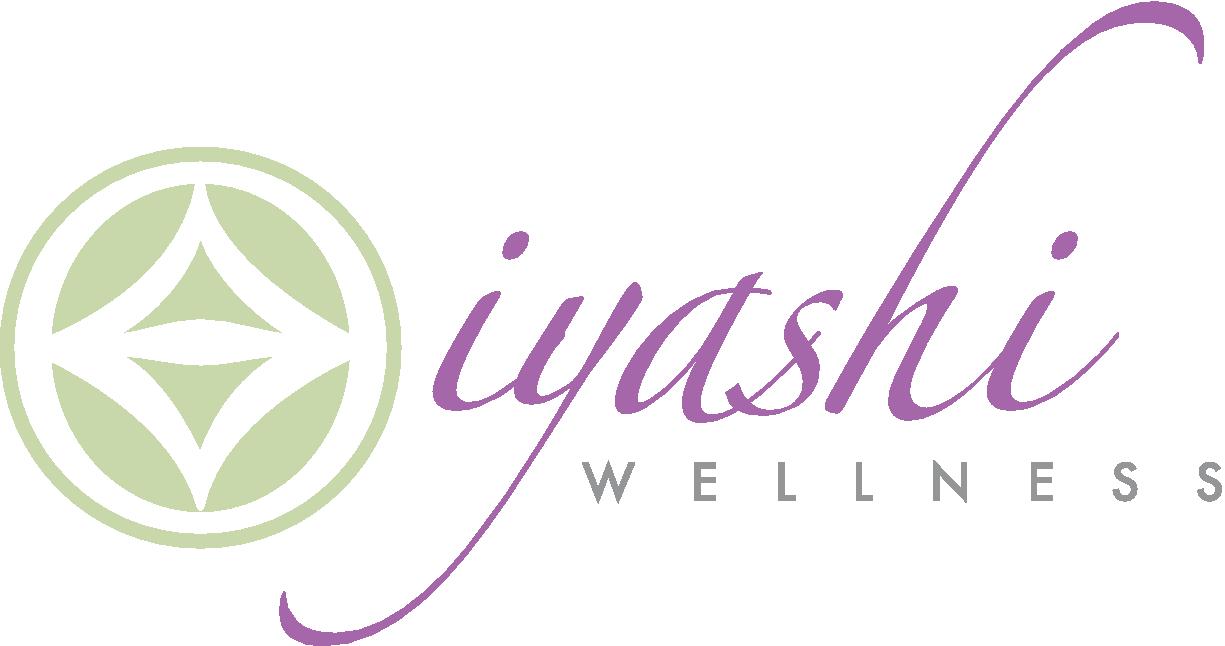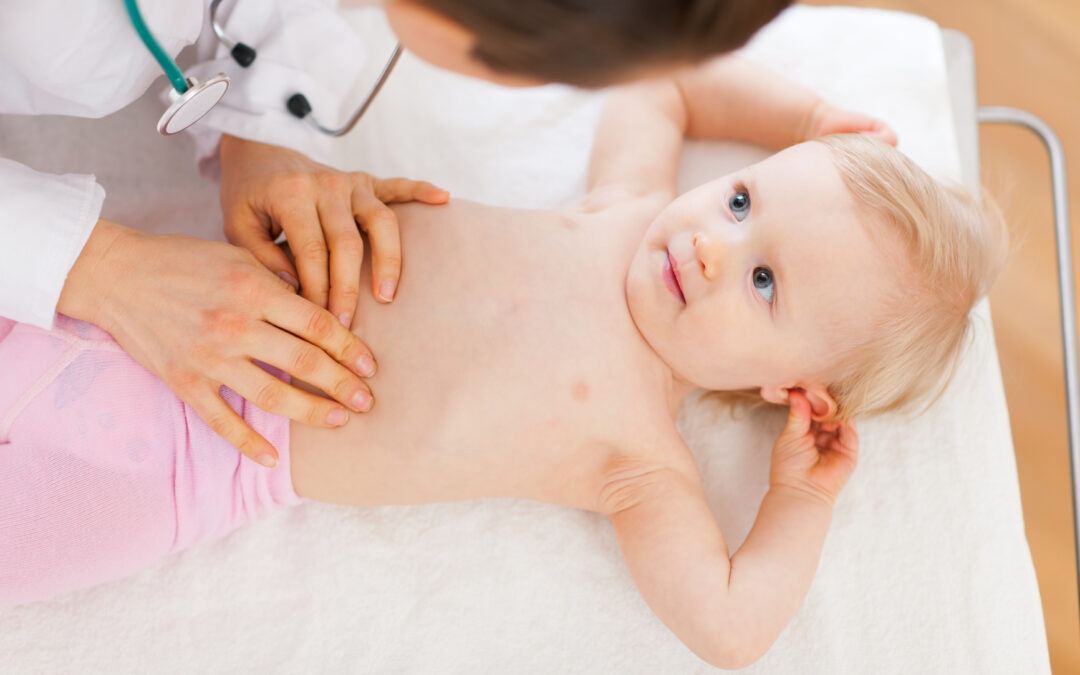Asian Medicine has a highly evolved system of pediatric care that can help infants, toddlers, children, and teens improve their health without the use of potentially harmful drugs. Asian Medicine doesn’t treat children like tiny adults. Rather, it offers a variety of treatment methods and modalities that are unique to the area of pediatrics. (To get a quick overview of the history of pediatrics in Asian Medicine, read my article here.) The pediatric modalities I use in my clinic are shonishin (“show knee shin”), tuina, moxibustion, acupuncture, dietary counseling, and herbal medicine.
The literal English translation of shonishin is “little children needle.” (Sho means little, ni means children, and shin means needle.) The practice of shonishin originated in 17th century Osaka, Japan specifically for the treatment of infants and children up to the age of about 10. Shonishin involves stroking, tapping, rubbing, and pressing the skin with special tools to create a variety of gentle sensations on the skin. Consider it non-needling acupuncture for kids, as shonishin mimics the effects of acupuncture. The treatment process typically takes 5 – 20 minutes, depending on the age and constitution of the child.
Check out how Luriko uses her shonishin tools with her cute patient:
Tuina is a technique which utilizes traction, motion, massage, and stimulation of the acupuncture points. It can be used, along with shonishin, in the treatment of both chronic and acute musculoskeletal conditions, as well as non-musculoskeletal (internal) conditions such as stomach ache, constipation, difficulty sleeping, chest congestion and cough, or anxiety.
When parents bring their children to my clinic for Asian Medicine, during the treatment session I always teach the parents some simplified shonishin and tuina massage techniques, which the combination I call Iyashi Touch. They can do Iyashi Touch at home using ordinary items (such as a soup spoon) as a treatment tool and can easily be learned by parents for regular “maintenance” between clinic appointments.
Physical touch through Iyashi Touch is crucial to a child’s development by ensuring a properly balanced sympathetic and parasympathetic nervous system, a healthy immune system, optimal musculoskeletal development and growth, and an optimally functioning digestive system.
Iyashi Touch also teaches children body awareness, which is important for a variety of reasons. First, when children have body awareness, they begin to understand when they’re tired, sleepy, hungry, thirsty, in need of physical exercise, hurt, sick, or comfortable. This empowers them with the knowledge that they can help themselves feel better with self-care, self-massage, or by asking for help, and thereby helping them stay better regulated, avoiding the huge mood and energy swings that are so common in children.

Another large part of my arsenal of tools to help heal a child is the use of moxibustion, also known as moxa. Moxa is the dried herb Mugwort, which we use to burn and allow the heat to penetrate the channels to alleviate pain and improve circulation. Consider it heat therapy, where you put a heat pad on a certain area, but in our office, we use specialized tools to pin point the radiant heat on certain acupuncture points to promote health and healing.
I also do use acupuncture on children, but it’s an exception. To learn more about my “taps” usage, click here.
Everything I’ve written so far may seem strange and/or difficult to understand as it’s not something that is part of the Western culture, but rest assured, what you will observe as your child gets a treatment from me is that after they settle in and start getting treated by me, 9 out of 10 children will start to zone out, because they get so relaxed from the wonderfully soothing, nerve-relaxing and -regulating effect my treatments have on them. When the body is allowed to relax, instead of fighting an inflammation or infection or at a perpetual state trying to regulate itself, this then relaxed state allows the innate healing ability of the body to go into effect, thereby actually allowing healing from within to happen. All this with no drugs or surgeries just mostly Iyashi Touch. If I can state one thing about our children’s bodies, and all bodies as a matter of fact, is that we can heal naturally given the right environment and tools without needing to rely on pharmaceutical drugs.
What about herbal medicine? How is taking an herbal remedy different from taking Tylenol or antibiotics or Ritalin, besides the fact that it’s supposedly “all natural?” Many parents are shocked to find out that most over-the-counter and prescription “medicines” aren’t really medicines at all, in the true sense of the word. They are drugs that suppress disease symptoms, a band-aid, if you will, while actually prolonging the disease process. We call this “treating the branch” of the problem instead of the root of the problem, in Chinese medicine. Chinese herbal medicine typically aims at treating the root of a disease process. Therefore, symptomatic relief may be less pronounced initially, but recovery from the disease process itself will be much faster, and longer lasting remedy. This lessens the need eventually for medication and antibiotics, because we are helping to heal the child’s body from within.
The Chinese herbal formulas I use in my clinic are made here in the United States, and are routinely tested to be free of heavy metals, pesticides, and other contaminants. The children’s herbal tinctures I offer here are made with glycerine to mask the often bitter flavors of the herbs, making it much more palatable for children (and adults!) to take. There are no unpleasant side effects when used as directed.
So what can PAM treat ? Here is a partial list:
- colds and flu, low immunity
- digestive problems like colic, “picky” eating, tummy aches, diarrhea, constipation
- sleep problems
- ear infections
- mood swings
- seizures, tics, tremors
- ADD/ADHD
- sprains, strains, bruises
- musculoskeletal problems
- delayed growth development
- eczema
- upper respiratory problems like asthma and bronchitis
- sinusitis, rhinitis
- food allergies and sensitivities
- hay fever/allergies
- growing pains
- bedwetting
I also like to share herbal medicine recipes that can be cooked as food. We call this Food as Medicine using Food Grade herbs. One example I’d like to share is a tea that children, adults, and senior citizens can benefit by drinking this tea. I recommend preparing a healthy and tasty tea that helps build wei qi, or the immune system, as we call it in Chinese Medicine. Here’s the recipe:
Astragalus Tea
huang qi (Astragalus) 15 gms
da zao (Chinese dates) 20 gms
gou qi zi (Go Ji berries) 25 gms
water 2 – 6 cups based on taste preference
1. Rinse all the herbs.
2. Fill a pot with anywhere from 2-6 cups of water
3. Throw in rinsed herbs into pot
4. Bring to a boil. Turn off and let it steep until tea comes to room temperature.
5. Drain the tea, removing the herbs. Children can eat the gou qi zi and da zao as a snack as (caution, some da zao come with pits!)
6. Drink in lieu of water, especially during the cold/flu season.
This can be cooked in a crock pot as well. Let it cook on low setting for at least 4 hours. The longer cooked the stronger the medicinal effects. Enjoy!
This is Part 8 of my 8 Part Series on Healthy, Happy Eating for the Whole Family. Part 1: SAD DIET: ARE YOU OR YOUR CHILDREN EATING ONE? Part 2: THE YIN AND YANG OF SEASONAL EATING. Part 3: HOW TO INCREASE YOUR CHILD’S IQ AND ATTENTION SPAN WITH NUTRITION. Part 4: HOW TO GO GLUTEN FREE AND DAIRY FREE AND HAVE YOUR PIZZA AND ICE CREAM, TOO! Part 5: 4 TIPS ON HOW TO GET A “PICKY EATER” TO EAT. Part 6: THE CALCIUM MYTH: IT’S NOT WHAT YOU THINK. Part 7: WHY RAW FOODS FOR CHILDREN IS NOT THE BEST IDEA
To Learn More About PAM and what I do, go to:
I also created a 12 Part Series on Leaky Gut and Family Health. Part 1: Leaky Gut: What Is it, And Do You and Your Child Have It? Part 2: Leaky Gut According to Chinese Medicine Part 3: The 4 R’s to Gut Healing: Removal (Step 1) Part 4: The Feingold Diet for Behavioral Problems Part 5: Real Food 101 Part 6: Autoimmune Paleo Protocol for Leaky Gut Part 7: The 4 R’s to Gut Healing: Replacement (Step 2) Part 8: Reinoculation Phase for Healing Leaky Gut Part 9: Repair Phase for Healing Leaky Gut Part 10: Challenges of Going Through Dietary Changes and How To Succeed Part 11: Raising Kids with Healthy Cravings and Part 12: Leaky Gut: Tying It All Together

